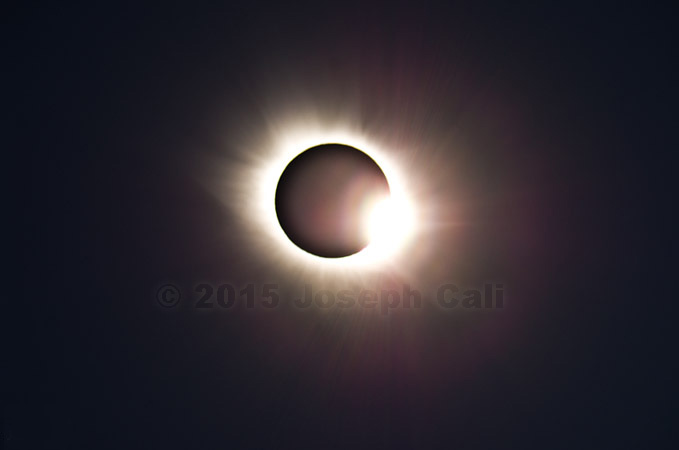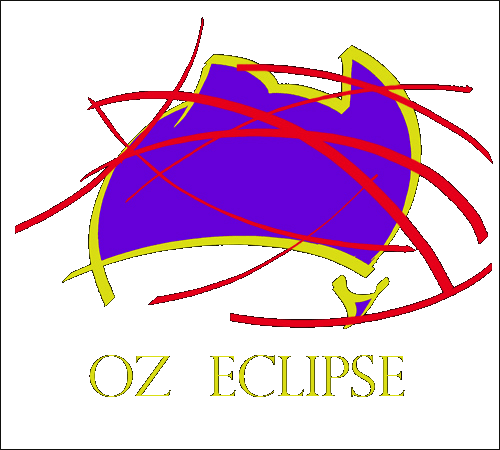
 |
WAITING FOR THE
SHADOW
SOLAR AND LUNAR ECLIPSE OBSERVINGHOME PAGE |
|
|

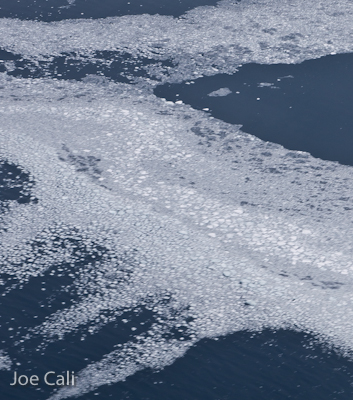 Sea ice seen on approach to Longyearbyen |
When
I
was in my 20's and 30's, I'd spend almost every weekend of winter and
spring going cross country skiing. If there was snow on the ground in
the Australian Snowy Mountains, you'd find me there. I went ski mountaineering on
glaciers in New Zealand and in Europe. Some people shut down and
hibernate in the cold. I love it. Cold
weather invigorates me. I love the feel of icy cold wind on my
face.
My regular observing partner, Bengt
Alfredsson is from Sweden. He, predictably, hates the cold.
Nonetheless, when we began considering this eclipse back in 2011, it
didn't take long for us to agree on the Arctic environment of Svalbard.
Weather prospects, though poor, we better than the other landfall.
Neither of us like air or ship platforms. Intimidating climate statistics indicated possible temperatures anywhere between -5oC and -35oC and high cloud percentages. I prepared my equipment and purchased special clothing suitable for these conditions. I built a power supply powered by Li Fe S2 batteries capable of working at very low temperatures. It needed to be able to power my telescope motor drive and camera to -40oC if necessary. I equipped one DSLR with the same low temperature lithium iron disulphide batteries in its battery grip. My other mirror-less camera could only take one standard lithium ion rechargeable battery. The charter flight operator imposed a 16kg checked bag limit and 6.5kg carry-on. This made life very difficult. My suitcase is strong but weighs 4kg. That left me with 12kg for the contents. The tour company advised us to bring a lightweight nylon bag but this was not going to protect equipment sufficiently. Every item was carefully considered before it went in the case. We flew in over the sea ice. From the plane, it looked like the sea ice were tessellated tiles, covering the Arctic Ocean in great floating terraces. |
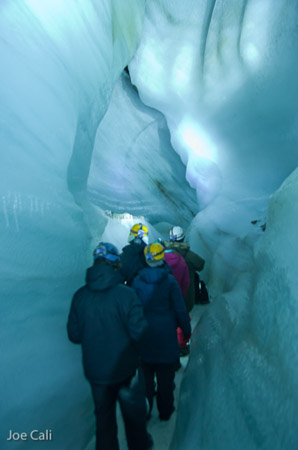 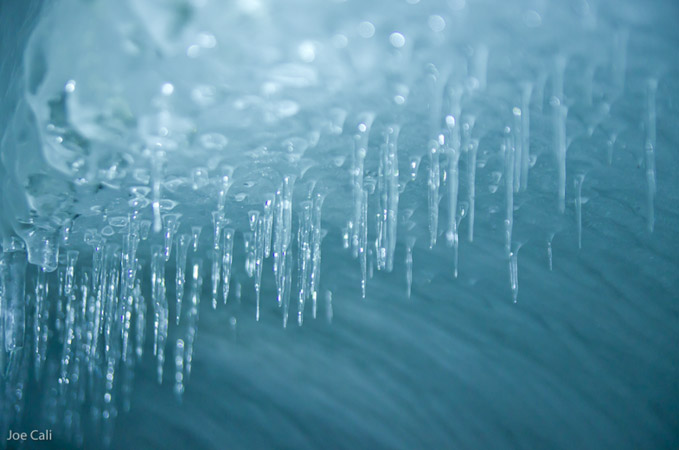 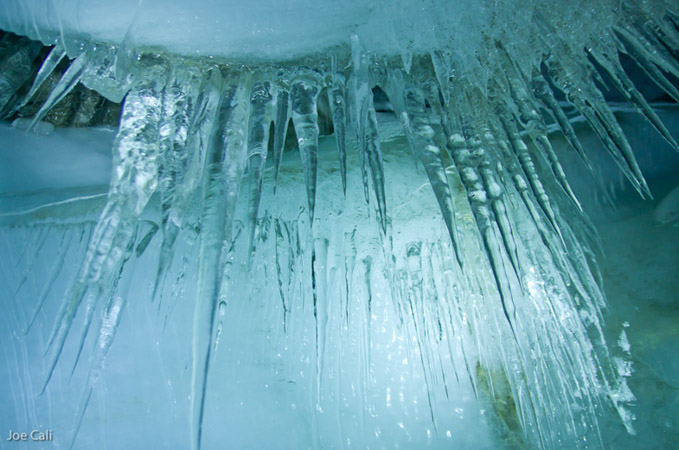 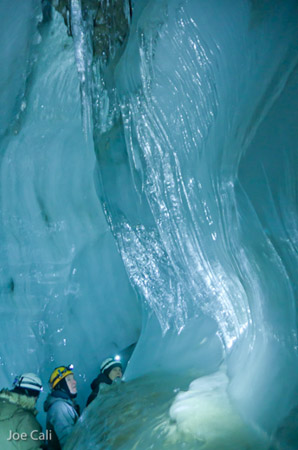 Meltwater channel in Longyearbyen Glacier |
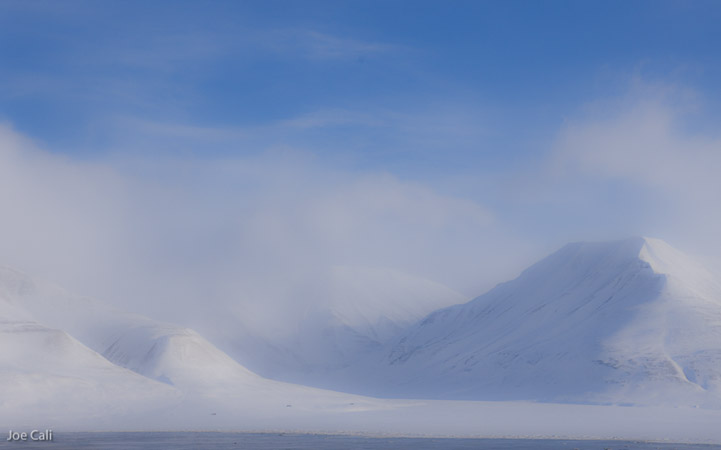
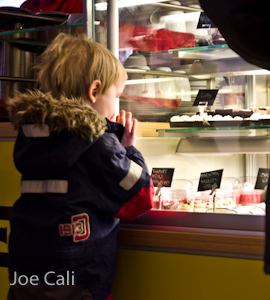
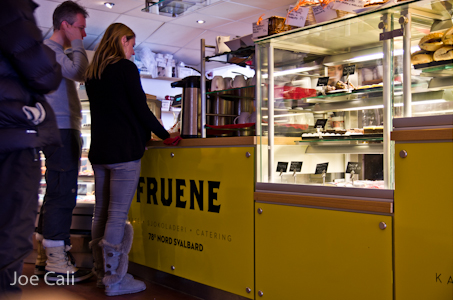

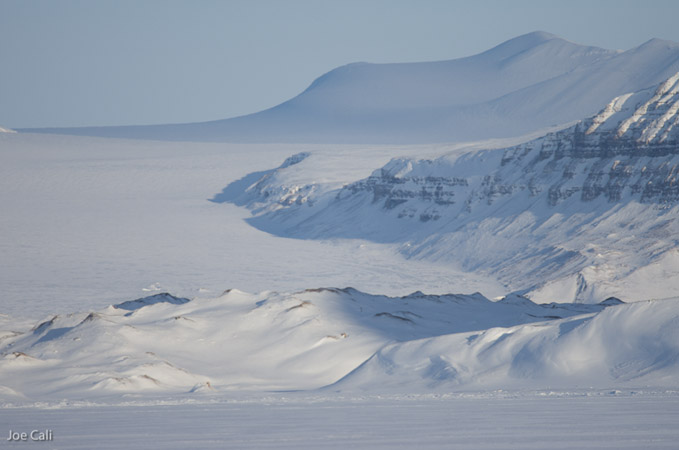


|
Eclipse Day On eclipse morning, I went to the observing site 2hrs before first contact. The sky was almost completely clear save a few clouds out to sea low on the west horizon. The air was a crisp -16oC and burnt the nose with each breath. My clothing worked very well. I felt very warm, even hot at times while others around me were jogging on the spot trying to keep warm. I set up the Losmandy Starlapse system. I had done what little tool assembly was required in the warmth of my hotel room the previous day. Fortunately, assembling the system only required dovetails and finger tightening. It only took a few minutes to complete. I used my polar alignment jig to align the polar axis. The jig enabled me to polar align the mount good enough for solar eclipse photography in about 1-2 minutes. About 15mins before first contact, I installed batteries in the two cameras. The K-01 mirror-less camera is powered by a single internal D-Li-90 battery & internally programmed to shoot a wide-angle time lapse of 770 discreet fish-eye frames at 1 frame per 2s over 25 minutes starting 8 minutes before totality. The K-5 was powered by one internal D-Li-90 lithium ion rechargeable battery and 6x AA size, Li Fe S2 non-recharge batteries in a battery grip. The K-5 has a 5-frame per second drive, and 3 or 5 step bracket. I set the bracket to 2ev per step and 5 steps giving a ten-stop range. I can do this completely by touch without looking at the camera or telescope so that I can visually enjoy the entire eclipse. On installing the batteries and powering up, I noted that the LCD displays were responding very slowly due to the cold. The K-01 with a wide-angle lens was set up to capture time-lapse, the other was attached to the prime focus of a 70mm f6 refractor. I started the time-lapse 8 minutes before totality and left it ticking away. More detail about this on the tech page. |
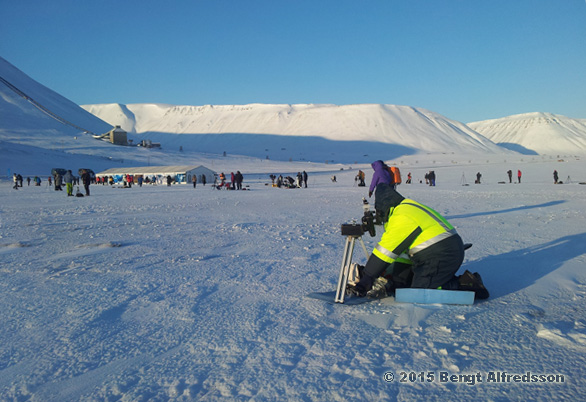 Hard
to tell under the Michelin Man suit but the glowing ball of yellow is
me setting up the Losmandy Starlapse system at the eclipse site. I'm
using the ultralight tripod from my older lightweight mount, a
78.5 degree homemade equatorial wedge and the Losmandy Starlapse head.
I brought two pieces of lightweight insulating closed cell foam mat.
One to stop the tripod legs slipping if we were on ice, the other for
me. This turned out to be a very wise move. The mat gave me
protection from the -20oC ground. At one stage, I knelt briefly of bare snow, my knee started to burn with frostbite immediately. Hard
to tell under the Michelin Man suit but the glowing ball of yellow is
me setting up the Losmandy Starlapse system at the eclipse site. I'm
using the ultralight tripod from my older lightweight mount, a
78.5 degree homemade equatorial wedge and the Losmandy Starlapse head.
I brought two pieces of lightweight insulating closed cell foam mat.
One to stop the tripod legs slipping if we were on ice, the other for
me. This turned out to be a very wise move. The mat gave me
protection from the -20oC ground. At one stage, I knelt briefly of bare snow, my knee started to burn with frostbite immediately. |
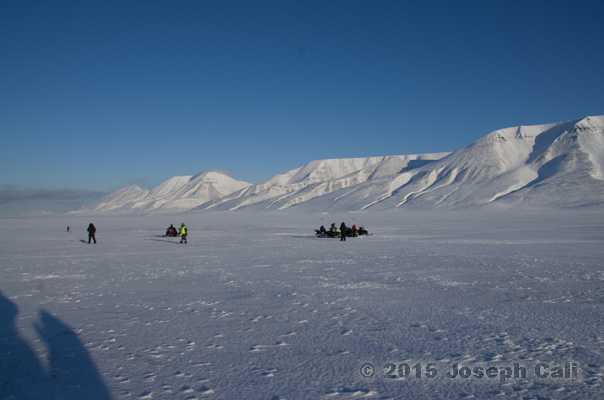 Armed guards patrolled the site perimeter to guard against possible attacks by polar bears. Armed guards patrolled the site perimeter to guard against possible attacks by polar bears. |
 What
a way to go! A small group observe the eclipse from this hot air
balloon that launched from Adventdalen Glacier near our observing site. What
a way to go! A small group observe the eclipse from this hot air
balloon that launched from Adventdalen Glacier near our observing site. |
 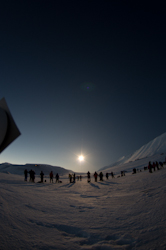 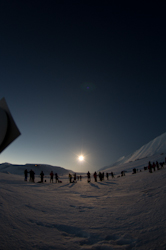 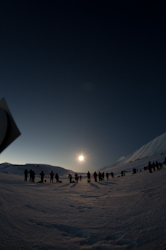 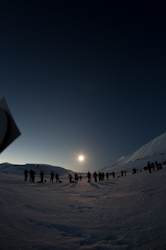  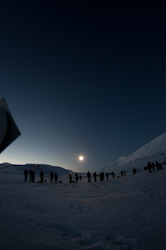  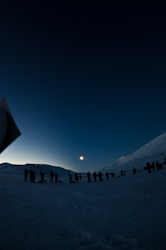 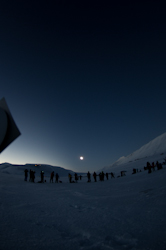 Here comes the shadow! View the whole wide field totality flash slide show. Opens in a new window. Close window to return here. The intrusion on the left is the solar filter on my refractor. |
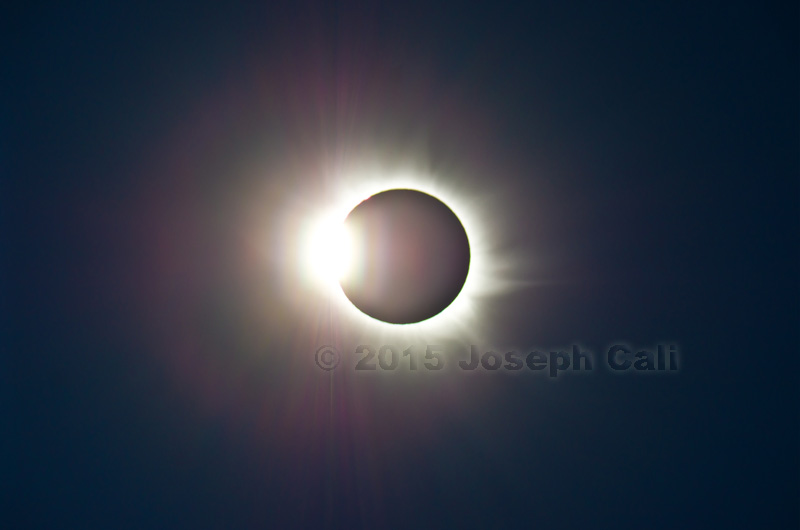

| A
stunning totality and it was clear! Despite the daunting weather
prospects, we woke to slightly cloudy skies that quickly cleared giving
us a memorable view of the eclipse with long diamond rings, dramatic
shadow bands, and a stunning corona. Solar north is up and tilted
23o to the right. Note the structure typical of a developing solar minimum, fine polar brushes and bigger broader equatorial coronal streamers. This corona composite is a radial composite composed of 15 different exposures used for the underlying radial composite then many extra images used to fill in details and voids. Radial composite image exposures taken with 70mm f6 APO refractor, Pentax K5, ISO100, 1/4000s – 1/4s at 1 stop intervals. A Larson-Sekanina filter with 1o rotations applied in Adobe Photoshop CS3. This was primarily to recover detail lost by poor focusing. The Crayford focuser was not behaving in the cold possibly due to shrinkage. It became slightly loose so that the locking screw caused focus shift. Some smart sharpening and some layer blending was then applied to complete this composite. The star 1 solar diameter from the limb at the 2 o'clock position is HIP117887, a magnitude 5.75 star. |

